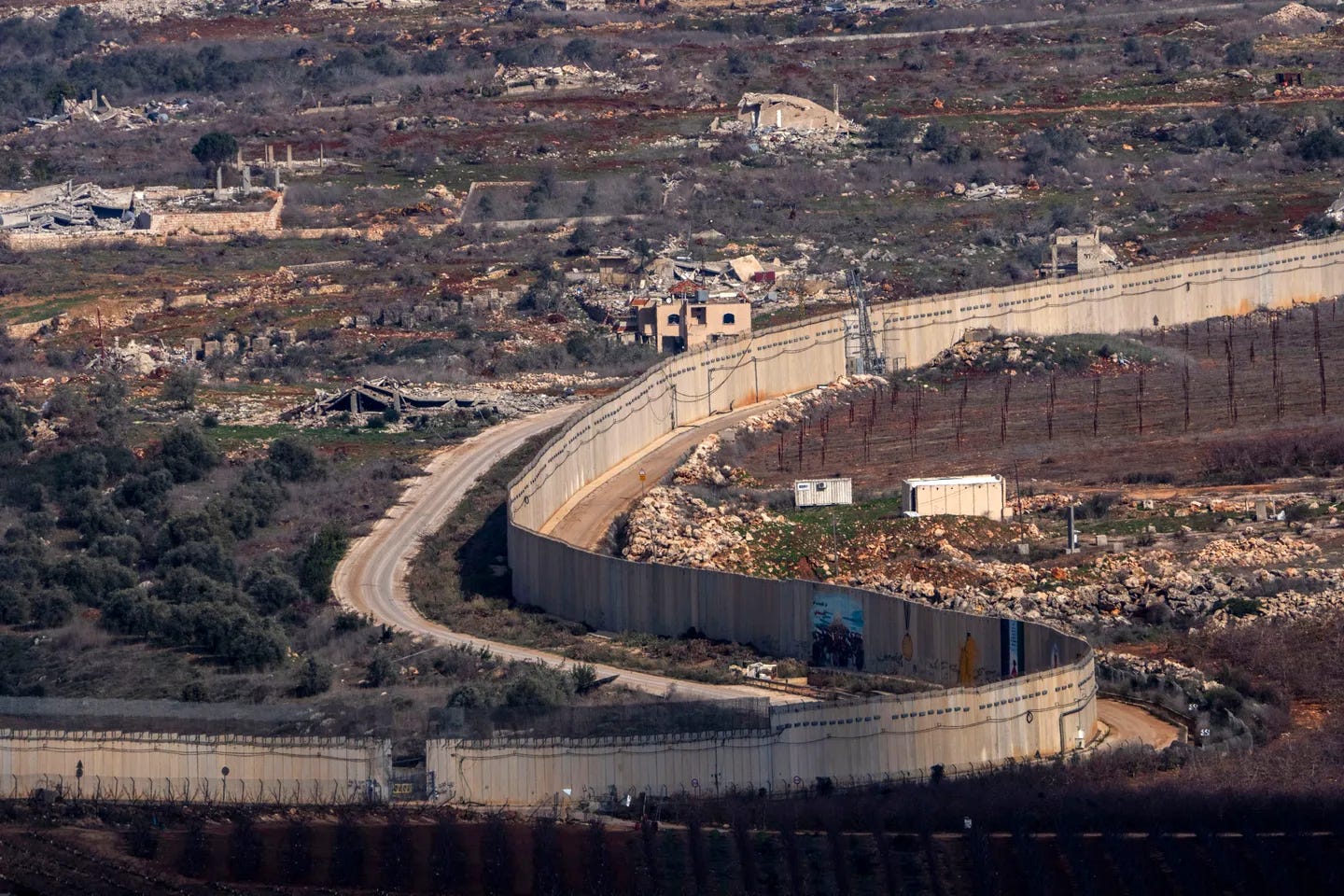UNIFIL Confirms Israeli Wall Built Inside Lebanon in Violation of Resolution 1701
UNIFIL surveys confirm Israeli T-wall extensions penetrating Lebanese territory near Yaroun, alongside additional border alterations and airstrikes on the Litani River.
Lebanon, PUREWILAYAH.COM - UN peacekeepers have verified new and significant Israeli violations along the Lebanese border, where concrete T-walls have expanded beyond the UN-demarcated Blue Line into sovereign Lebanese territory.
According to a detailed UNIFIL geospatial survey completed in October, a concrete T-wall constructed by Israeli forces southwest of the village of Yaroun extended past the Blue Line, enclosing more than 4,000 square meters of Lebanese land.
UNIFIL reported that it formally informed the Israeli occupation forces of this breach and requested the removal of the encroaching structure. Despite the official notification, Israeli forces continued construction activities in the same sector.
In November, UNIFIL personnel documented additional T-wall segments being installed near Yaroun. A second survey confirmed that another portion of the barrier, this time southeast of the village, again crossed into Lebanese territory.
According to the mission, these findings will be relayed through a written communication to the Israeli occupation, marking the second confirmed breach in as many months.
UNIFIL noted that these developments represent not isolated incidents but part of a pattern of repeated border violations that undermine the stability of a delicate and heavily monitored frontier.
Ongoing Alterations Observed Between Aytaroun and Maroun ar-Ras
Beyond Yaroun, UNIFIL also monitored a separate wall under construction between the towns of Aytaroun and Maroun ar-Ras. This barrier, while situated south of the Blue Line, represents an additional modification to the border landscape carried out unilaterally by the Israeli occupation forces.
These activities further intensify concerns regarding Israeli attempts to alter established border dynamics on the ground. UNIFIL emphasized that such actions run contrary to the stipulations of UN Security Council Resolution 1701, which ended the 2006 war and obliges all parties to respect Lebanese sovereignty, territorial integrity, and the UN-defined Blue Line.
The peacekeeping mission reiterated its call on the Israeli occupation to fully withdraw from all areas north of the Blue Line and to halt any construction that may increase tensions. It also highlighted the urgent need for adherence to agreed demarcations to prevent renewed escalation along one of the region’s most sensitive frontiers.
Israeli Strikes Cause Severe Damage Along the Litani River
In a separate development, the Litani River Authority confirmed that Israeli airstrikes directly targeted sections of the riverbanks near the town of Tayr Felsay.
The authority stated that the strikes resulted in structural damage to parts of the riverbed, causing partial blockages and obstructing the natural flow of water in multiple locations.
Field teams were immediately deployed to conduct on-site assessments. Their inspections revealed debris accumulation, localized collapses, and disrupted sections of the river course that, if left unaddressed, could increase the risk of flooding.
The affected area includes residential neighborhoods, tourist sites, and agricultural lands heavily dependent on the Litani River for irrigation and seasonal water supply.
The authority emphasized that securing the river course and preventing downstream impact will require coordinated and rapid intervention. It urged relevant agencies to maintain continuous monitoring until full clearance and stabilization are achieved.
Irrigation Systems and Water Quality Remain Operational
Despite the damage inflicted along the riverbanks, the Litani River Authority confirmed that the airstrikes did not compromise water quality nor disrupt operations at the al-Qasimiyya irrigation project.
The authority reported that essential infrastructure — including vital pumping stations, distribution facilities, and operational control systems — remained intact.
Irrigation programs continue according to schedule, ensuring uninterrupted water flow to farmlands relying on the project. The authority affirmed that it will maintain elevated inspections in the coming days to ensure that no delayed structural effects emerge as water pressure and flow patterns return to normal. (PW)


